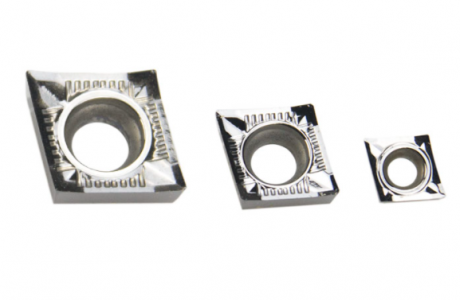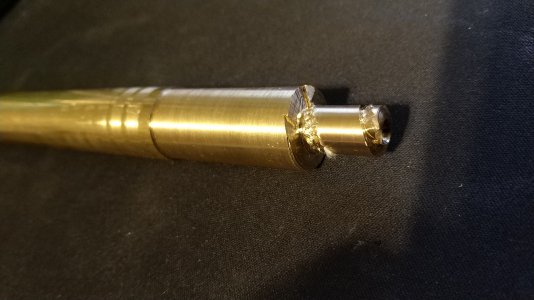- Joined
- Jan 28, 2018
- Messages
- 32
I been trying to decode all the insert tool holders that came with my lathe. ENCO 14x40. So far I have learned that there is a sea of inserts to choose from and depending on material to be turned, the insert can make or break the operation.
A list of holders are as follows, MTANR 12-3, MTGNR 12-3, MCLNL 12-4, NKLCL 1005b, MSDNN 12-3, MCLNR 12-4b along with some others.
Starting with the MTANR and MTGNR I am trying to find the correct insert for turning 6061 aluminum. I know these holders have a built in negative rake and aluminum likes a positive rake. With that information I determined that a TNMx 332 insert would give a total positive rake. This is where things get fuzzy. A TNMS (according to a chart) has a chip breaker with a 20 degree positive rake and should result in 13 degree total positive rake.
Does this sound right or am I totally lost? Ive also looked at the TNMP and TNMG (which seems most common) however the TNMG has a landing before the positive chip breaker rake starts and would require a minimum depth of cut to turn aluminum.
It is also worth noting that these tool holders will need to be machined down on the bottom to lower the tool tip to center on my lathe. In a previous thread I asked about this and it seems the BXA tool post is on the tall side for my lathe.
Im also open to other suggestions such as a 1/2" shank holder set to get me started, specifically in aluminum (if it matters).
Thanks
A list of holders are as follows, MTANR 12-3, MTGNR 12-3, MCLNL 12-4, NKLCL 1005b, MSDNN 12-3, MCLNR 12-4b along with some others.
Starting with the MTANR and MTGNR I am trying to find the correct insert for turning 6061 aluminum. I know these holders have a built in negative rake and aluminum likes a positive rake. With that information I determined that a TNMx 332 insert would give a total positive rake. This is where things get fuzzy. A TNMS (according to a chart) has a chip breaker with a 20 degree positive rake and should result in 13 degree total positive rake.
Does this sound right or am I totally lost? Ive also looked at the TNMP and TNMG (which seems most common) however the TNMG has a landing before the positive chip breaker rake starts and would require a minimum depth of cut to turn aluminum.
It is also worth noting that these tool holders will need to be machined down on the bottom to lower the tool tip to center on my lathe. In a previous thread I asked about this and it seems the BXA tool post is on the tall side for my lathe.
Im also open to other suggestions such as a 1/2" shank holder set to get me started, specifically in aluminum (if it matters).
Thanks



